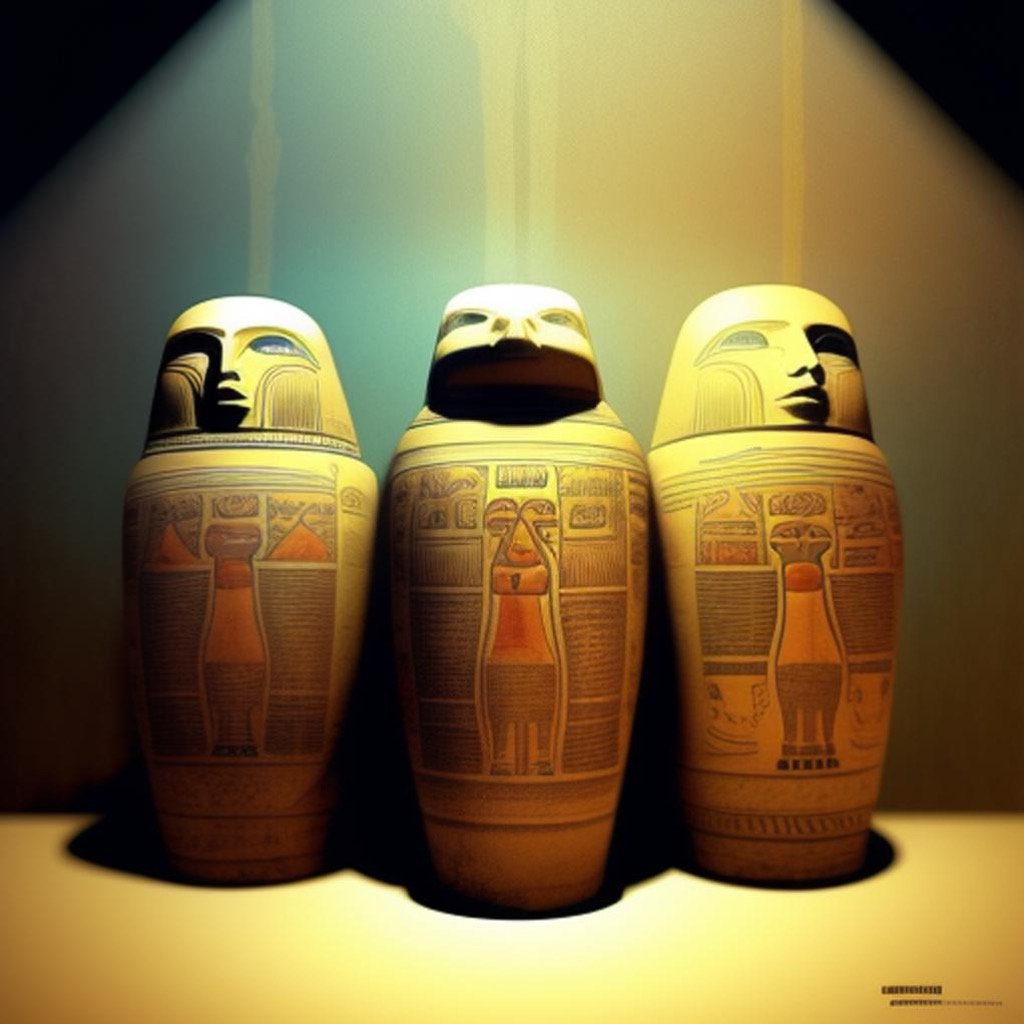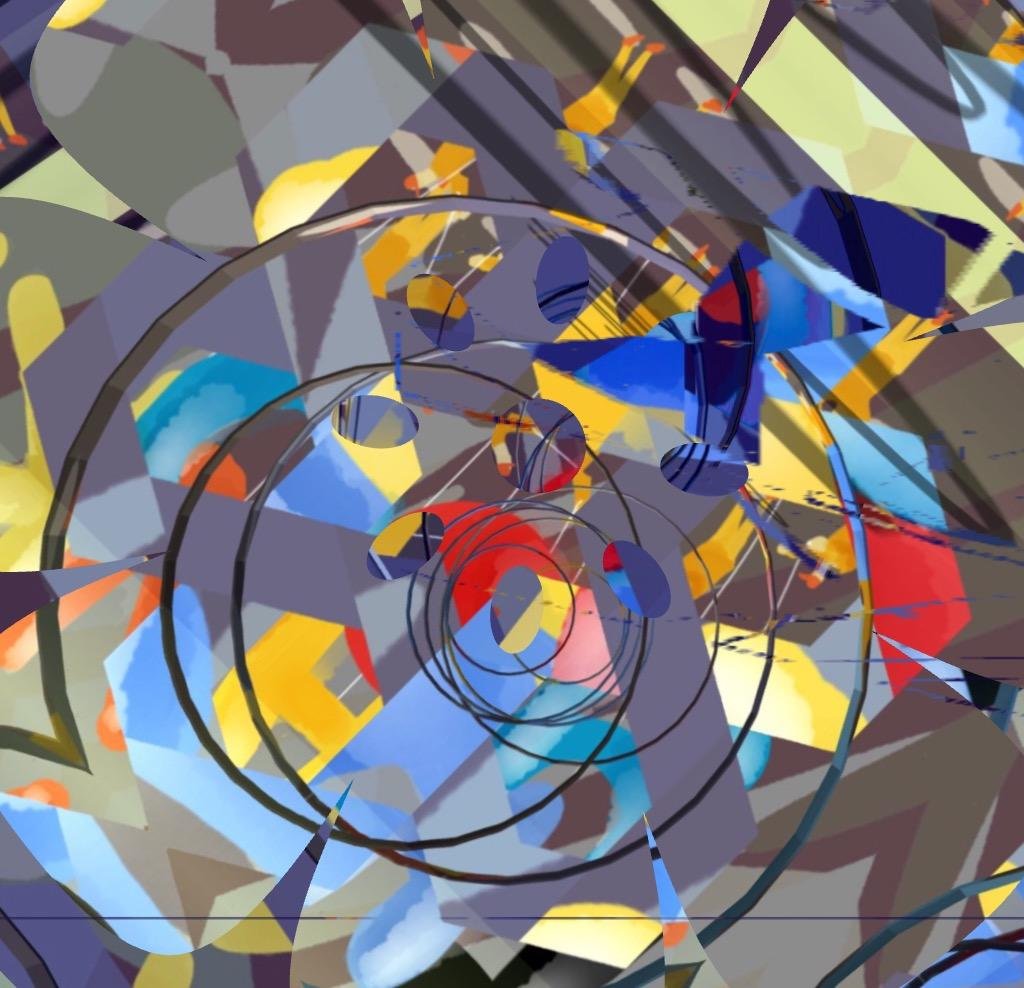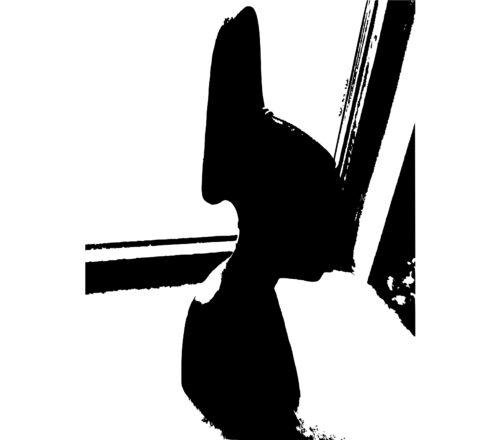
Table of Contents
Containers used to hold and preserve the internal organs of the deceased during mummification
Canopic jars, often referred to simply as “canopic jars,” were a type of container used by ancient Egyptians to hold and preserve the internal organs of the deceased during the process of mummification. These jars were an important element of Egyptian burial practices and played a significant role in ensuring the deceased’s successful journey to the afterlife.
Each canopic jar was associated with one of the Four Sons of Horus, who were a group of four deities in Egyptian mythology. These deities were believed to protect the organs and assist the deceased in the afterlife.
The Four Sons of Horus
- Imsety: Imsety was depicted with a human head and was responsible for protecting the liver. He was often depicted as a man with a human head, and he symbolized benevolence and kindness.
- Hapy: Hapy was associated with the lungs and was depicted with the head of a baboon or a falcon. He was considered the protector of the north and was associated with fertility and inundation.
- Duamutef: Duamutef was responsible for guarding the stomach and was depicted with the head of a jackal. He was associated with the east and was believed to assist the deceased in eating and digesting food in the afterlife.
- Qebehsenuef: Qebehsenuef protected the intestines and was depicted with the head of a falcon. He was associated with the west and was believed to aid the deceased in regeneration and transformation.
The organs of the deceased were carefully treated, wrapped, and placed within these canopic jars. The jars were then sealed and often placed in the tomb alongside the mummy. The practice of using canopic jars was an essential part of the mummification process, as it ensured the preservation and protection of the organs needed by the deceased in the afterlife.
Over time, the design of canopic jars evolved, and in some cases, the Four Sons of Horus were depicted as human figures on the lids of the jars. The containers themselves were typically made from materials such as pottery, limestone, alabaster, or other types of stone. Each canopic jar had a specific shape associated with its respective deity and the organ it held.
Canopic jars are not only valuable artifacts for understanding ancient Egyptian burial practices but also provide insights into the Egyptians’ beliefs about the afterlife and their efforts to ensure the continuity of existence beyond death.
Shop Corner
Canopic jars on Amazon
Horus on Amazon
Thank you for reading, shares and comments!
✨ Comment Policy ✨
We welcome thoughtful, kind, and constructive comments that contribute to meaningful conversations.
Please note:
- Promotional links and unsolicited offers will be removed.
- Spam, irrelevant content, or self-promotion without prior permission will not be published.
- We value quality engagement over quantity — thank you for helping us keep this a respectful and inspiring space!
Sources openai Language models, aitrot, picsart and mib
Embark on a journey into the realm of affiliate marketing and craft your own website within a vibrant, supportive community. Join me in this adventure, where you can begin as a free starter and stay as long as you desire. Enjoy complimentary hosting and foundational teachings to set you on your path. For those with advanced skills, opportunities to elevate your expertise await. Take a moment to explore and witness the magic for yourself!




